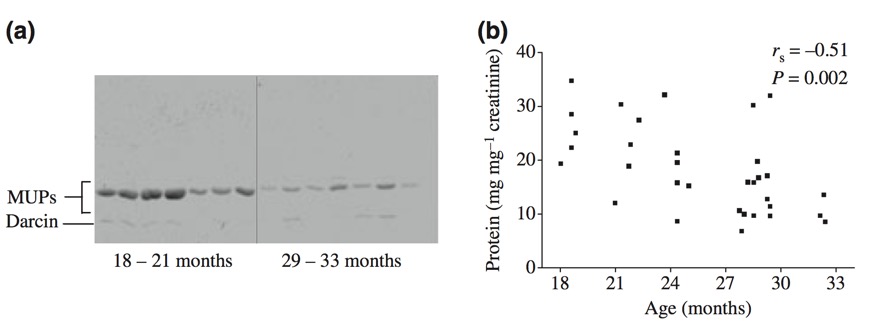Scent of sensecence

Garratt, .M, Stockely, P., Armstrong, S.D., Beynon, R/J. & Hurst, J.L. (2011) The scent of senescence: sexual signalling and female preference in house mice. J. Evol. Biol doi: 10.111111/j.1420-9101.2011.02367.x
Sexual signals are expected to be costly to produce and maintain, thus ensuring that only males in good condition can sustain their expression at high levels. When males reach senescence they lose physiological function and condition, which could constrain their ability to invest in costly sexual signals, decreasing their attractiveness to mates. Furthermore, females may have evolved mating preferences that cause avoidance of senesced males to enhance fertilization success and viability of offspring. Among mammals, the size of antlers and other weapons can decrease with senescence, but changes in olfactory sexual signals have been largely unexplored. We examined changes in olfactory signals with senescence in house mice (Mus musculus domesticus), where males excrete volatile and involatile molecules in scent marks that elicit behavioural and priming responses in females. Compared to middle-aged males, the urine of senesced males contained a lower concen- tration of involatile signalling proteins (major urinary proteins or MUPs), and associated volatiles that bind to these proteins. The reduced intensity of male scent will affect the longevity of scent signals deposited in the environment and, accordingly, females were less attracted to urine from senesced males deposited 12 h previously. Females also discriminated against senesced males encountered behind a mesh barrier. These results reveal that investment in olfactory signalling is reduced during senescence and suggest that senesced males and their scent may be less attractive to females.